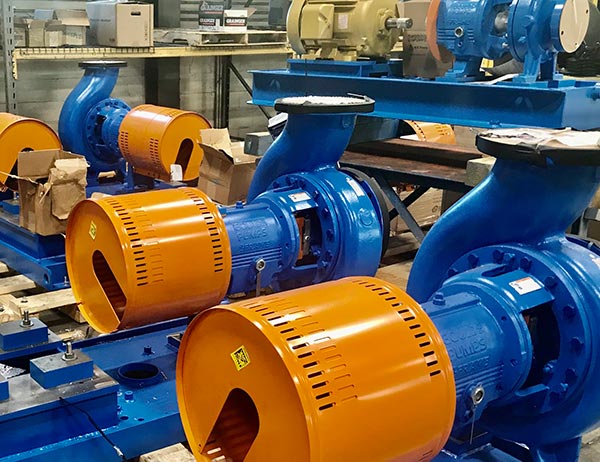You already know that non-OEM parts are typically cheaper, but do they really save you money in the long run? Let’s go over the facts.
When maintaining or repairing your Goulds pump, one of the most critical decisions you’ll face is whether to purchase original equipment manufacturer (OEM) parts or opt for non-OEM alternatives. This choice impacts not only your immediate costs but potentially the long-term performance, reliability, and lifespan of your equipment. (Keep reading for the detailed breakdown or jump straight to the OEM vs Non-OEM summary)
Understanding the Difference
OEM parts are manufactured by or under license from ITT Goulds Pumps. These components are identical to those originally included in your pump and are made to the exact specifications of the original design.
Non-OEM parts (sometimes called aftermarket, alternative, or compatible parts) are produced by third-party manufacturers. While designed to fit and function in Gould’s pumps, they are not made by the original manufacturer.
Cost Considerations
The most immediate and obvious difference between OEM and non-OEM parts is price. Non-OEM parts typically cost 20-40% less than their OEM counterparts. This price gap exists for several reasons:
- Non-OEM manufacturers don’t invest in original research and development
- They often operate with lower overhead costs
- They may use cheaper manufacturing processes or materials
For maintenance managers working with tight budgets, the cost savings of non-OEM parts can be compelling, especially for routine maintenance.
Warranty and Support Considerations
Using non-OEM parts may affect your pump’s warranty status. Most manufacturers specify that using non-original parts can void equipment warranties. If your Goulds pump is still under warranty, this is a crucial factor to consider.
Additionally, when problems arise, having used OEM parts can simplify troubleshooting with the manufacturer’s technical support team.
Quality and Performance Factors
While initial cost is important, are you really saving money in the long run when it fails sooner and requires another repair? Performance should be your primary consideration. Several factors influence the quality comparison:
Material Quality
OEM parts typically use materials that match the original design specifications exactly. Non-OEM manufacturers may substitute different materials that could affect performance or durability. High-quality aftermarket manufacturers will use materials that meet or exceed original specifications, while lower-quality producers might use inferior materials to reduce costs.

Precision Engineering
The precision of manufacturing affects how well parts fit together and function. OEM parts are built to the original design tolerances. Non-OEM parts may have slight variations that could affect:
- Efficiency
- Noise levels
- Vibration
- Wear patterns
Quality Control
Goulds OEM parts undergo rigorous quality control protocols consistent with ITT’s standards. The quality control standards for non-OEM parts vary widely between manufacturers, from excellent to minimal.
The OEM vs Non-OEM Choice
The decision between OEM and non-OEM parts depends on several factors:
When Goulds OEM Parts Make More Sense
- Critical components that affect overall system performance
- Equipment still under warranty
- Applications where failure would be costly or dangerous
- When exact material specifications are crucial for your process
- When maximum equipment lifespan is the priority
When Non-OEM Parts Might Be Appropriate
- Routine maintenance items with limited impact on overall performance
- Older equipment beyond warranty periods
- Non-critical applications
- Emergency situations where availability is the primary concern
- Significant budget constraints
Best Practices When Using Non-OEM Parts
If you decide to use non-OEM parts, follow these best practices:
- Research the supplier thoroughly, looking for established companies with good reputations
- Request material certifications and quality control documentation
- Start with less critical applications to evaluate performance
- Document performance and compare to OEM benchmarks
- Develop relationships with reliable suppliers who stand behind their products
Have Questions? Contact Our Team
There’s no one-size-fits-all answer to the OEM versus non-OEM debate for Goulds pump parts. The right choice depends on your specific situation, including budget constraints, application criticality, and risk tolerance.
Many successful maintenance operations use a hybrid approach—using OEM parts for critical components while saving costs with carefully selected non-OEM parts for less crucial applications. Whatever route you choose, thorough research and quality awareness will help ensure your Goulds pumps continue operating efficiently and reliably.
Need help developing a parts strategy that optimizes both performance and cost-effectiveness for your specific needs?
